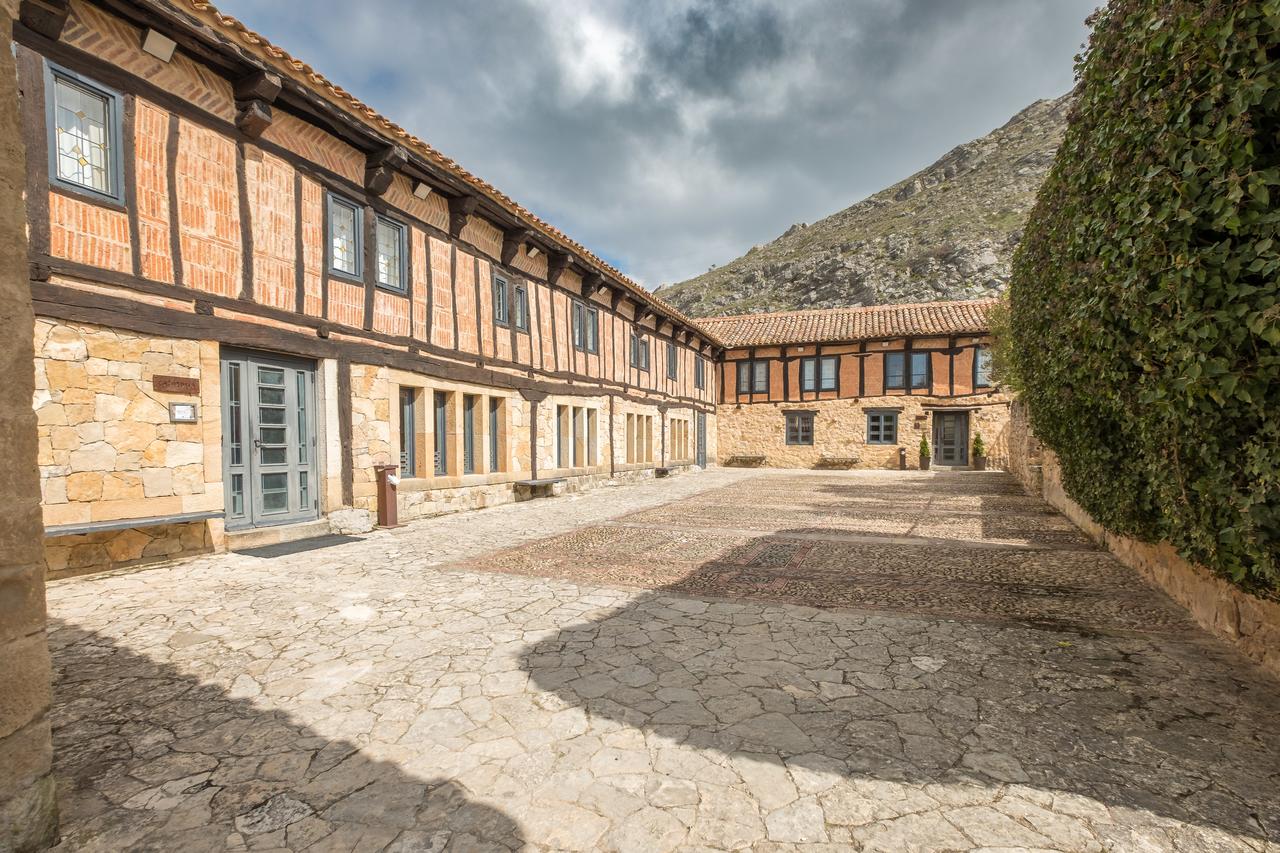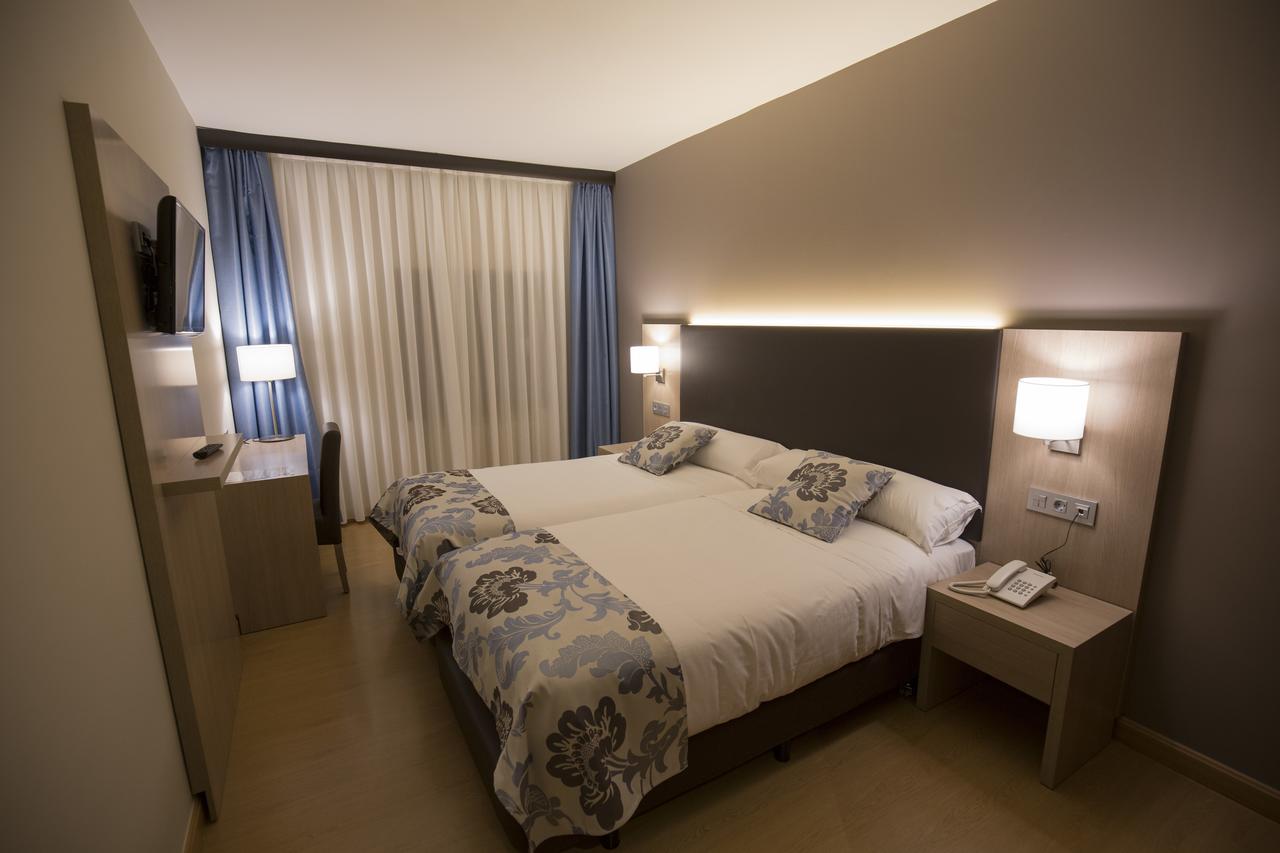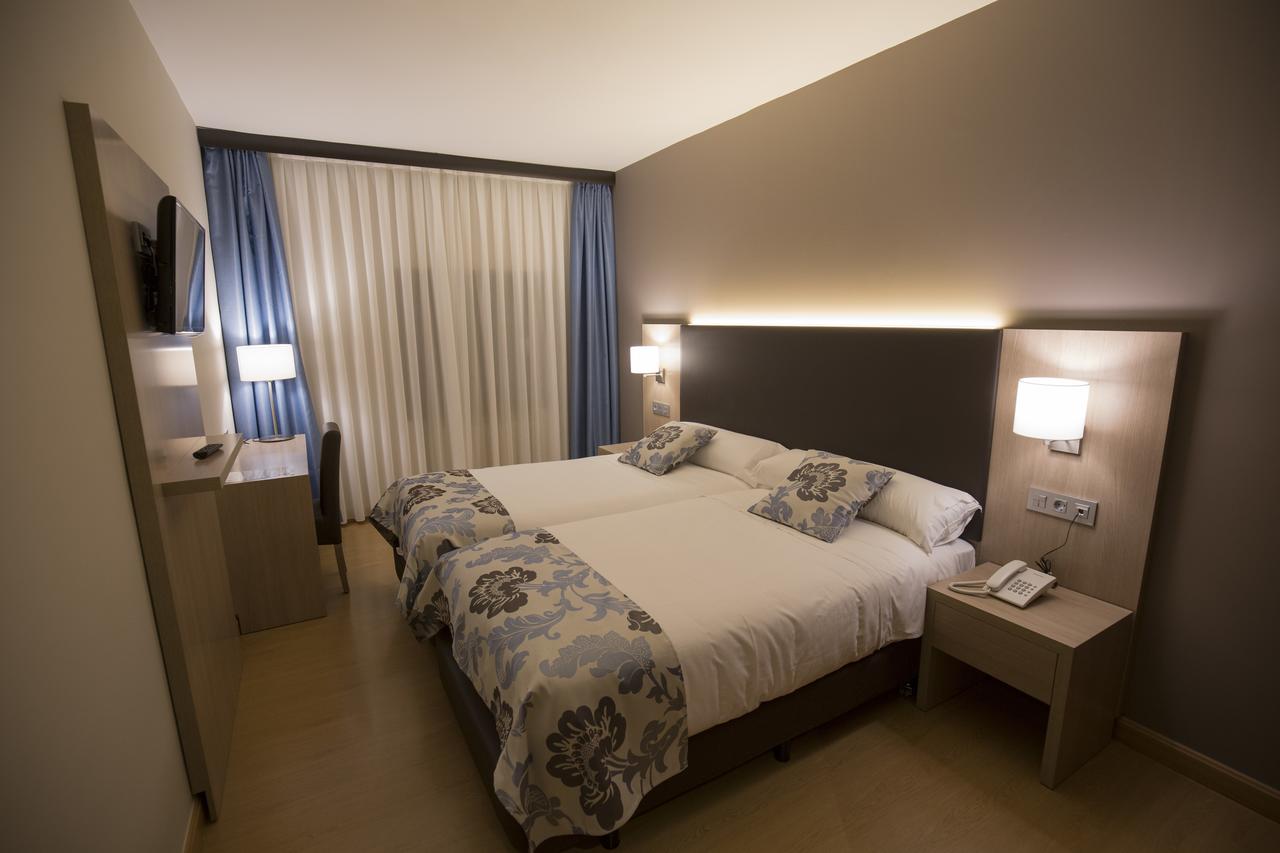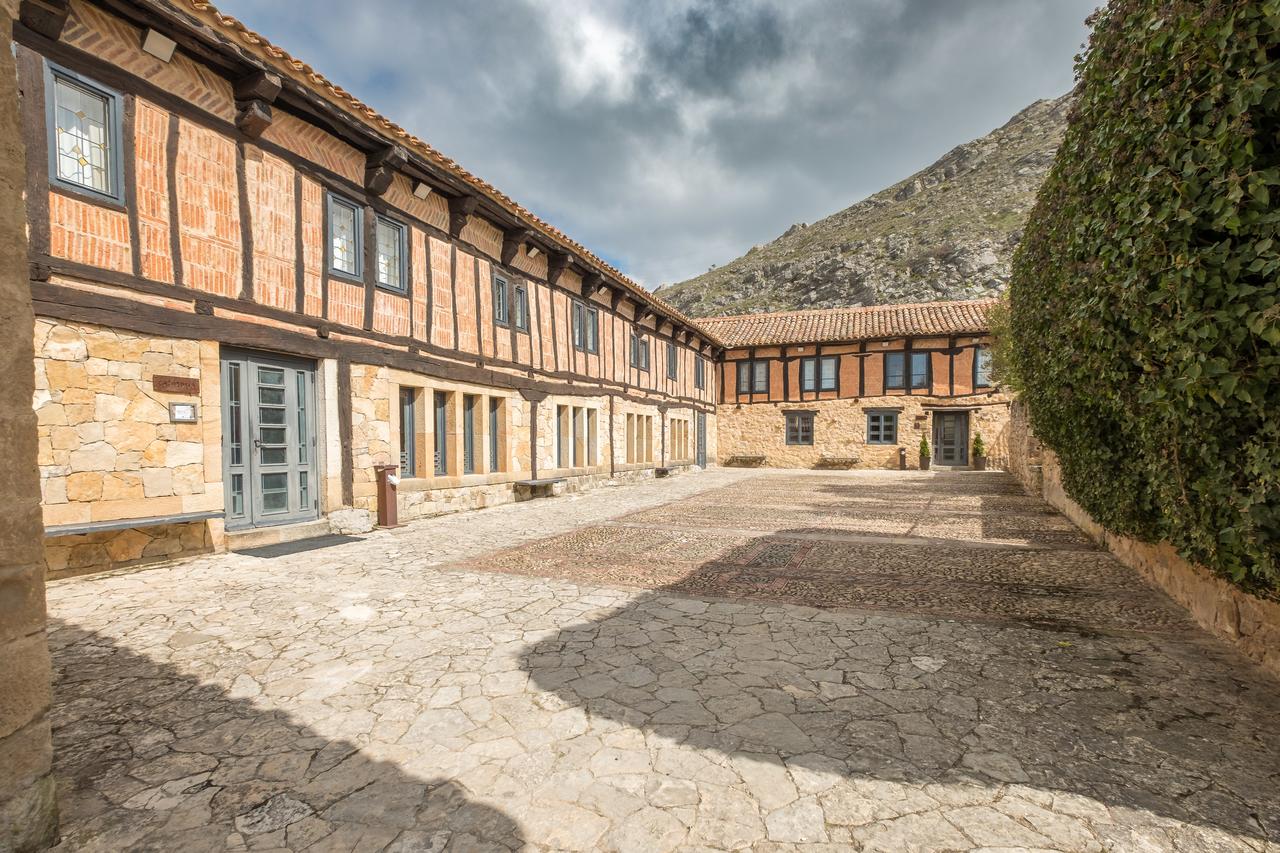Aguilar is a big town. It was walled in medieval times, and there are a few vestiges left, along with lots of houses with those big coats of arms. The rio Pisuerga runs along one side of the center, and there is a nice paseo. The town square (very lively and friendly) and the Colegiata de San Miguel are interesting. The church has visigothic origins, but what is there now is mainly late romanesque, gothic, and even some later touches thrown in. The inside has lofty gothic arches dividing the naves, and I really liked the choir stalls and baptismal font. But I did not spent much time there, because it was only a stop on the way to my real goal — to get the keys to the Romanesque Santa Cecilia church, on the edge of town, up a hill and a short distance below the castle.
The Casa del Cura is across from the church. Ring the bell, give the priest your passport, and you will get the keys. It’s about a 10 minute walk to the Santa Cecilia church. And oh, wow. The only thing missing to add to the wonder would have been a ring of those huge old medieval keys. Today, the locks have been modernized, but the sensation of unlocking the doors of a romanesque church, which you will have all to yourself, was really something. One or two keys for the door itself, then another key gives you entrance to room with the electric box so you can illuminate the interior. The showpiece is the capital of the Slaughter of the Innocents, which is exquisite. Other capitals are nice as well. But sitting all alone is good balm for the soul, very restorative and calming. After the visit, I went up to the castle ruins and walked around a bit. No entry gates, you can walk freely.
In Aguilar, I have stayed twice at Hotel Valentín. Room price includes breakfast, which was available in the bar below at an early hour. Not cheap, and there are a number of other options. The splurge would be staying at the Posada Santa María La Real. It is located at the edge of town right on the camino, at the end of a pretty promenade. No rooms were available when I was last there, but maybe the third time’s a charm if I ever get there again! A website with nice pictures of the monastery, its cloister, and the Santa Cecilia church.
Aguilar has a big Romanesque institute, which has a museum, but it hasn’t been open when I was there. Another thing to put on my “to do” list when I return.
The Road: Day 8. Aguilar de Campoó to Cervera de Pisuerga (29 km).
Aguilar is on the edge of the Monte Palentino, the mountainous region at the top of the province of Palencia. The camino skirts the south side of it, and there are lots of nice views over the next few days. And then after Guardo you are right smack IN the mountains.
The day walking from Aguilar is really lovely. Lots of off-road, lots of river walking. Walk down the promenade in Aguilar to the convent, continue walking till you get to the reservoir, and then go up and around on the right, do not cross the dam.
The first surprise is the anthromorphic tombs right after Corvío. Probably from around the 10th C. I learned that the tombs were made so that bodies always had their feet facing east.
Lots of walking through fields, and then in Salinas de Pisuerga, you cross the rio Pisuerga and walk alongside for 12 kms, all the way into Cervera de Pisuerga. It is very pleasant. About a km or two outside of Cervera, you’ll see a sign pointing you towards the Ermita Rupestre de San Vicente (Rock hermitage of Saint Vincent). It’s about a half km off camino, and highly recommended. Another medieval construction, with more anthropomorphic tombs.






